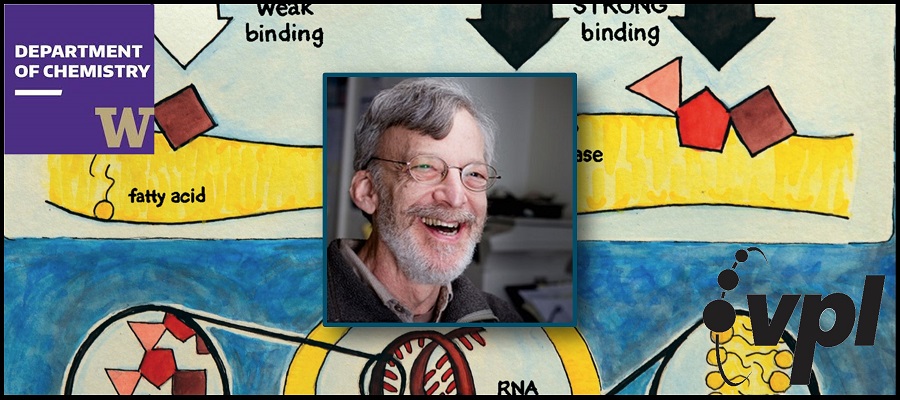VPL Team members Roy Black, Sarah Keller and other collaborators in the Keller Lab in the Chemistry Department at the University of Washington recently published a new paper that has made the cover of the ChemBioChem journal! Their paper, titled: “A Step toward Molecular Evolution of RNA: Ribose Binds to Prebiotic Fatty Acid Membranes, and Nucleosides Bind Better than Individual Bases Do”, builds on their prior exciting work on understanding the origins and evolution of the earliest cells on Earth!
Abstract: A major challenge in understanding how biological cells arose on the early Earth is explaining how RNA and membranes originally colocalized. We propose that the building blocks of RNA (nucleobases and ribose) bound to self‐assembled prebiotic membranes. We have previously demonstrated that the bases bind to membranes composed of a prebiotic fatty acid, but evidence for the binding of sugars has remained a technical challenge. Here, we used pulsed‐field gradient NMR spectroscopy to demonstrate that ribose and other sugars bind to membranes of decanoic acid. Moreover, the binding of some bases is strongly enhanced when they are linked to ribose to form a nucleoside or – with the addition of phosphate – a nucleotide. This enhanced binding could have played a role in the molecular evolution leading to the production of RNA.
You can see their publication online here.
